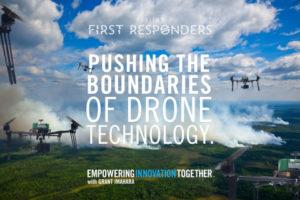Mouser Electronics Inc.
Mouser is an award-winning, authorized semiconductor and electronic component distributor, focused on the rapid introduction of new products and technologies to electronic design engineers and buyers. This isn’t the first time they’ve worked with drones; they’ve even paired drone technology with a 3D printed car! But this time they’re dealing with more than one. And it takes a lot of work to design a fleet of connected drones!
“With the Empowering Innovation Together program, Mouser looks to push the boundaries of innovation. This new series goes even further by developing technology that may help save lives,” said Glenn Smith, President and CEO of Mouser Electronics.
The first video in the series highlights the GlobalARC platform, a full-service drone deployment and management system built by Easy Aerial. It has built-in airspace compliance, and live video feed from drones. Drones are outfitted with a GPS system, thermal sensors, a barometer, and several other sensors that capture important information, such as video, heat imaging, chemical detection, and radiation, to help first responders determine when disaster sites are safe to enter. The video also gives some additional details about the opportunities and challenges of drone-based search and rescue.
“Drones, with their agility and small size, seem perfect for search and rescue operations. A helicopter can take hours to send out and can cost thousands of dollars per use,” said Imahara. “Search and rescue teams can launch a drone in just minutes, saving critical time in urgent situations. But we have a lot of work ahead of us to make drones perform at their peak in search and rescue operations.”
“Specifically, you can have different agencies in the field, using different modules. If you think of firefighters as first responders, this would be your zero responder,” explains Stamatovski, adding, “It keeps people out of harm’s way.”